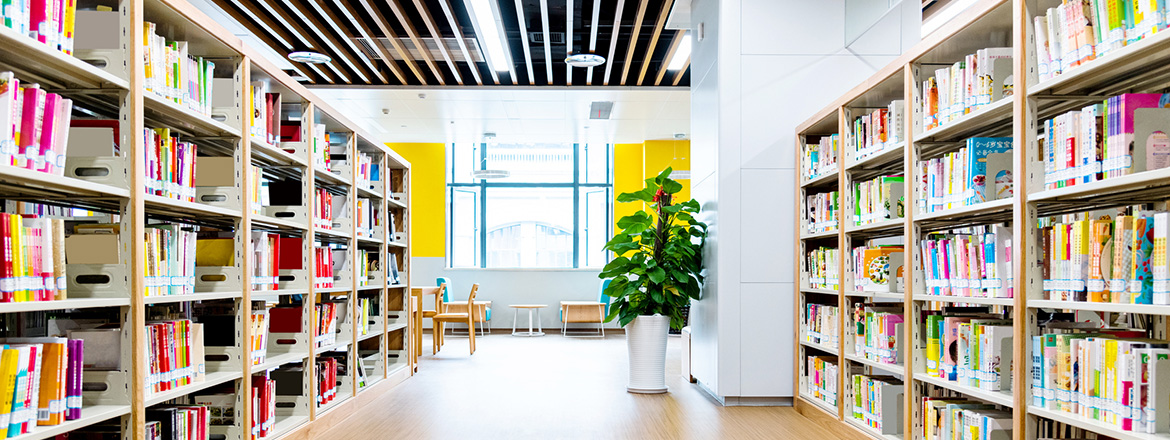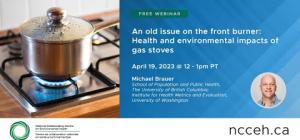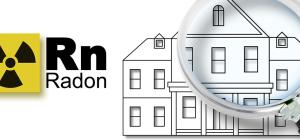
Public health and public libraries in partnership to promote healthy indoor air quality

A key issue during the COVID-19 pandemic was the critical importance of ventilation in preventing transmission. In Canada, building codes prioritize air tightness and energy efficiency over ventilation to cope with winter cold and summer heat. As a result, many public and private settings may be under-ventilated to save on heating and cooling costs. This makes indoor air quality (IAQ) of enormous public health concern, not just because of respiratory diseases like COVID-19, but because a poorly ventilated indoor environment exposes occupants to a mix of other dangerous contaminants, including volatile organic compounds, fine particulate matter, and radon.
Given the vast number of potentially under-ventilated spaces, homeowners, tenants, landlords, and building managers need a simplified tool to identify poorly ventilated areas. Low-cost CO2 sensors may help; such devices estimate the concentration of indoor carbon dioxide (CO2), which will increase over time if the amount of ventilation is inadequate for the number of occupants or their activities.
Although seemingly simple, there are issues in deploying CO2 sensors successfully. There is wide variability in sensor cost, quality and accuracy. Although low-cost sensors are available, a good quality sensor may still cost several hundred dollars. The cost of purchasing a good quality sensor may be a barrier or deterrent if the sensor is only needed for a short period of time (i.e., to identify problem spaces in a building). In addition, installing sensors and interpreting CO2 data is not straightforward. Correct sensor placement, setting reasonable thresholds, and understanding the different indoor air quality risks require public health guidance.
This blog details a recent collaboration between Peterborough Public Library, Peterborough Public Health, and various partners to offer public health guidance and free access to CO2 sensors through a lending library. It is hoped that this experience will encourage other municipalities and local public health to attempt similar projects.
How did this project come about?
In the spring of 2022, Peterborough Public Health (PPH) reached out to the Library to gauge interest in creating a community CO2 sensor lending program. They worked with the National Collaborating Centre for Environmental Health (NCCEH), Yale University, University of Colorado, London School of Hygiene and Tropical Medicine, Prescientx, and CO2 Check to develop a creative commons licensed fact sheet entitled CO2 monitoring for indoor air quality. The main aims of this document were to explain how indoor CO2 is generated, what it means for various potential health risks, and how to improve ventilation. The group was conscious of highlighting what the sensors could and could not do (i.e., they can help you understand how well ventilated your home is, but they are not carbon monoxide detectors).
The Library launched the CO2 monitors for borrowing on April 1, 2022. There are 15 kits, each containing a fact sheet, an instructional guide, and a monitor. Additional information is also available on the Library's Carbon Dioxide webpage.
The monitors are standalone sensors with an LED display, allowing the user to observe real-time changes in CO2 levels. Users can also download the free app, create an account, and pair the sensor with their cell phone or tablet. This allows the user to monitor the sensor remotely or download the data collected while it is paired with their device. No CO2 data is collected or retained by the Library.
Project progress: lending data and survey results
This project's overarching goals are to engage library members in IAQ issues and empower them to make positive changes in their indoor environments. In terms of engagement, all 15 of the Library's CO2 sensors have been on loan by more than 50 library members since the launch, indicating high demand and excitement for this learning opportunity.
To determine whether the project has empowered change-making, Peterborough Library collected data through a voluntary and anonymous survey sent out to all borrowers. Based on a sample of 20 respondents, we know that:
- The sensors were borrowed to assess IAQ in various public and private settings, including work, home, home offices, and community spaces.
- The sensors have enabled users to assess changes in air quality with room use (e.g., observing differences in CO2 levels with one vs. multiple people in the room). They have created awareness around the benefits of small changes, such as opening a window.
- Library members appreciated the opportunity to borrow a sensor from the Library. Several respondents mentioned that they would not have otherwise known about them or had the means to try one. These responses highlight the benefits of sensor lending libraries for promoting health equity and trust in public institutions.
What problems or unmet needs has the project encountered?
Project development and the Library's user survey identified several potential gaps or unmet needs.
The first unmet need is awareness or connection to reputable sources of information. Although numerous indoor air quality resources are available online, it is not always clear who is a trusted source. As such, the Library will work to promote online IAQ resources from trusted authorities, including Health Canada's comprehensive website on Air quality and health. The Library is also considering hosting workshops with guest presenters and local IAQ knowledge experts.
A second gap is how to best use the data generated. Although the Library does not collect users' CO2 data, this data in the aggregate has value for understanding IAQ conditions in Canadians' homes. Ideally, this data could be made public, allowing decision-makers, academics and others to better understand the scope and scale of under-ventilation in Canadian homes. This citizen science approach, in which members of the public collect and contribute to a body of data that can be used for research (i.e., crowd-sourced data), has become extremely useful in other areas of study, particularly ecological research. Crowd-sourcing indoor CO2 data would require developing a platform where users can voluntarily and safely upload their anonymized data. Though crowd-sourced data is often patchy (non-uniform coverage, blind spots), and the researcher has little control over data quality, citizen science may be one way to assess the ventilation issues in the Canadian building stock.
Finally, although the project has successfully raised IAQ awareness among participants, several Library survey respondents noted that they could not make changes to their indoor environment. Although it is unclear whether this inability is due to tenancy or lack of financial resources, it emphasizes a larger issue related to Canada's building codes, prioritizing air tightness and energy efficiency over ventilation and good IAQ. Updating the National Building Code to promote healthy IAQ would ensure that all Canadians are protected.
What's next?
Peterborough's CO2 monitor lending project has elicited great national interest from other municipalities and libraries and also internationally. The project has encouraged "copycats" in other jurisdictions by freely supporting inquiries and offering the public health information sheet through a Creative Commons license. Toronto Public Library launched its own CO2 sensor lending library (with an adapted factsheet) on July 11, 2022.
In addition to supporting CO2 lending libraries in other jurisdictions, the Library is now considering offering other types of sensors. For example, the permeation of geologically-sourced radon gas into homes is a problem across Canada. Radon gas is carcinogenic and results in more than 3,000 Canadian deaths annually. It is also extremely heterogeneous across the landscape, such that the levels present in homes are highly dependent on location, building age, air tightness, and other factors. Adding radon sensors to the Peterborough Library, similar to other jurisdictions, will create a further tool for improving IAQ and public health.
Summary
Poor indoor air quality is a known and serious issue related to building characteristics, indoor/outdoor pollution sources, climate and environmental conditions, and occupant activities, like cooking, smoking, and certain hobbies (e.g., use of paints and solvents). However, homeowners, tenants, and landlords can take steps to reduce IAQ risks if given the tools to assess their risk. The collaboration between Peterborough Public Library and Peterborough Public Health, with support from the NCCEH, Yale University, University of Colorado, London School of Hygiene and Tropical Medicine, Prescientx, and CO2Check, has been highly successful in engaging library users on indoor air quality. Their new goal is to expand library offerings and, at a higher level, advocate for the types of policies and programs that will empower building occupants to make or demand change for the better.
Authors
Angela Eykelbosh is an EH and KT Scientist at NCCEH and Jennifer Jones is the Chief Executive Officer of Peterborough Public Library.






